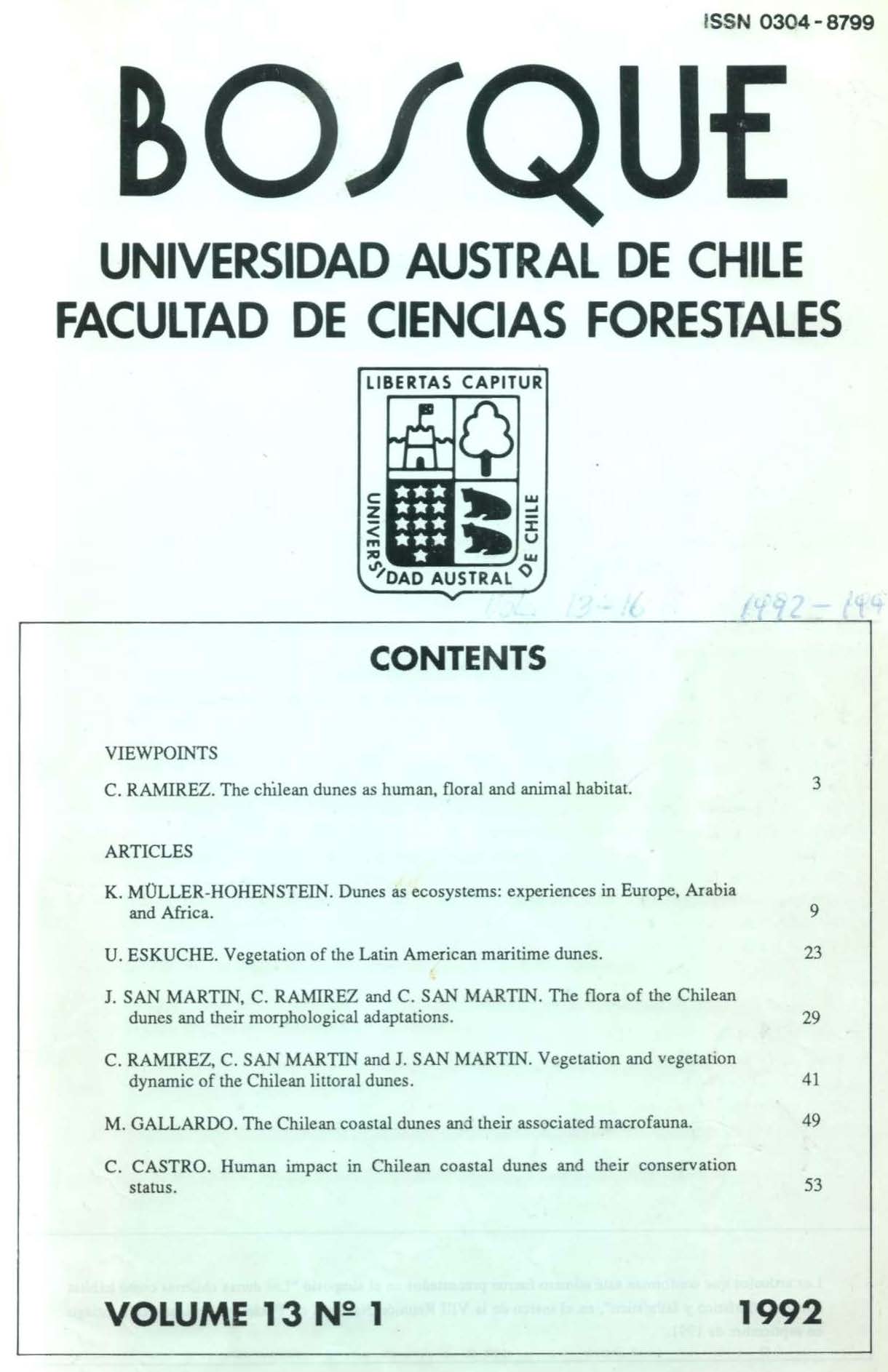Human impact in Chilean coastal dunes and their conservation status
Main Article Content
Abstract
Littoral dunes are original environments both from the point of view of their morphology and from the vegetation and fauna that they support. In Chile, they take up important areas between 29° 48'S and 41° 50'S, forming an interesting landscape resource. Knowledge concerning the present mode of evolution of these dunes is important since man, many times, uses these areas setting off irreversible processes of transformation. Different dune typologies are recognized geomorphologically, relating them with certain vegetational types: bordering dunes, interdune depression, etc. Most of the human activities carried 2 out in the Chilean dunes are related with: recreational use, sand extraction, garbage heaps, areas of urban expansion, agricultural/forestry use. The effects of these practices cause: destruction of typical vegetable associations, dune removal, erosion of stablized dune soil, loss of scenic value and transformation of the original morphology of the dunes. Studies on the inventory, carthography and monitoring of dune camps are being carried out to colaborate with the decisions and actions needed to manage these important Chilean natural environments.

